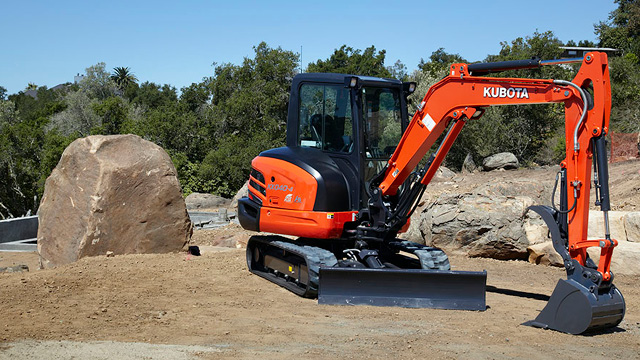Blog

Mastering Excavator Techniques: A Guide to Efficient Digging
Are you a mini-excavator enthusiast or a construction professional seeking to improve your digging skills? In this blog post, we'll delve into some valuable techniques for maximizing your productivity and efficiency when operating a mini-excavator. Assuming you have a basic understanding of the controls, we'll focus on proper positioning and where the real power lies when you're putting your machine to work.
Utilizing the Blade Effectively
The blade on a mini-excavator serves more than just pushing dirt. It plays a crucial role in manipulating the pivot point of the machine, which impacts stability and lifting capabilities. When digging a hole, always work over the top of the blade. This positioning shifts the pivot point forward beyond the tracks, significantly enhancing stability. Avoid swinging the machine with a full bucket too far from the centre, as it can compromise stability.
Using the Bucket Curl
Using the Bucket Curl
The bucket curl is where the real power lies in your mini-excavator. When digging, use the bucket teeth to penetrate the ground and then curl the bucket shut to break the soil. Avoid using other bucket functions to pull back towards yourself, as it lacks force due to the long arm's physics. Opt instead for the bucket curl circuit to make the digging process smoother and more efficient.
Digging a Flat Bottom Trench
To dig a flat-bottom trench efficiently, use a combination of the bucket curl and the dipper function. As the bucket starts to cut a flat trench at the bottom, simultaneously pull the dipper back into the machine. This harmonious coordination of functions allows you to dig a smooth and uniform trench, saving you from unnecessary repositioning.
Be Mindful of Equipment Specifications
Digging a Flat Bottom Trench
To dig a flat-bottom trench efficiently, use a combination of the bucket curl and the dipper function. As the bucket starts to cut a flat trench at the bottom, simultaneously pull the dipper back into the machine. This harmonious coordination of functions allows you to dig a smooth and uniform trench, saving you from unnecessary repositioning.
Be Mindful of Equipment Specifications
When speccing your mini-excavator, consider the depth you'll be digging and ensure you have the appropriate boom length. If your boom is longer than necessary, you'll find yourself repositioning the machine repeatedly, which can waste valuable time and effort.
Pinning Technique for Hard Soils
When facing hard soils that are difficult to penetrate, consider using the pinning technique. By rotating the machine 180 degrees and positioning the blade to your back, you can lift the back of the machine. This extra weight at the front improves the machine's ability to break into the hard ground and pull it out effectively.
In summary, mastering these mini-excavator techniques can significantly boost your productivity and make your digging projects more efficient. Remember to utilize the blade effectively, use the bucket curl for soil-breaking power, and coordinate the bucket and dipper functions for flat-bottom trenches. Additionally, be mindful of your equipment specifications and consider using the pinning technique for challenging soil conditions.
By applying these techniques and fine-tuning your skills, you'll become a pro at operating your mini-excavator, ensuring successful and smooth excavation projects. For any equipment needs or service requirements, reach out to Messick's at 800-222-3373 or visit us online. Happy digging!
Pinning Technique for Hard Soils
When facing hard soils that are difficult to penetrate, consider using the pinning technique. By rotating the machine 180 degrees and positioning the blade to your back, you can lift the back of the machine. This extra weight at the front improves the machine's ability to break into the hard ground and pull it out effectively.
In summary, mastering these mini-excavator techniques can significantly boost your productivity and make your digging projects more efficient. Remember to utilize the blade effectively, use the bucket curl for soil-breaking power, and coordinate the bucket and dipper functions for flat-bottom trenches. Additionally, be mindful of your equipment specifications and consider using the pinning technique for challenging soil conditions.
By applying these techniques and fine-tuning your skills, you'll become a pro at operating your mini-excavator, ensuring successful and smooth excavation projects. For any equipment needs or service requirements, reach out to Messick's at 800-222-3373 or visit us online. Happy digging!
.png)